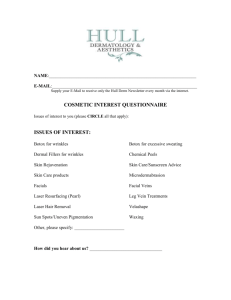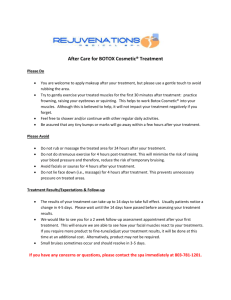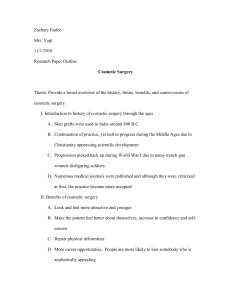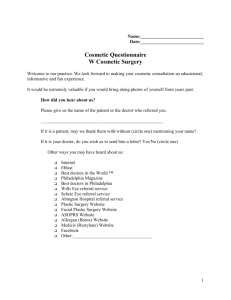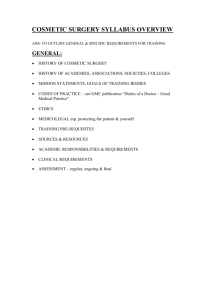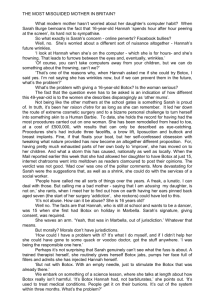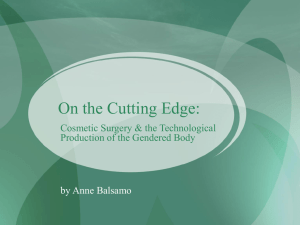Theme 1 Understanding of public health
advertisement
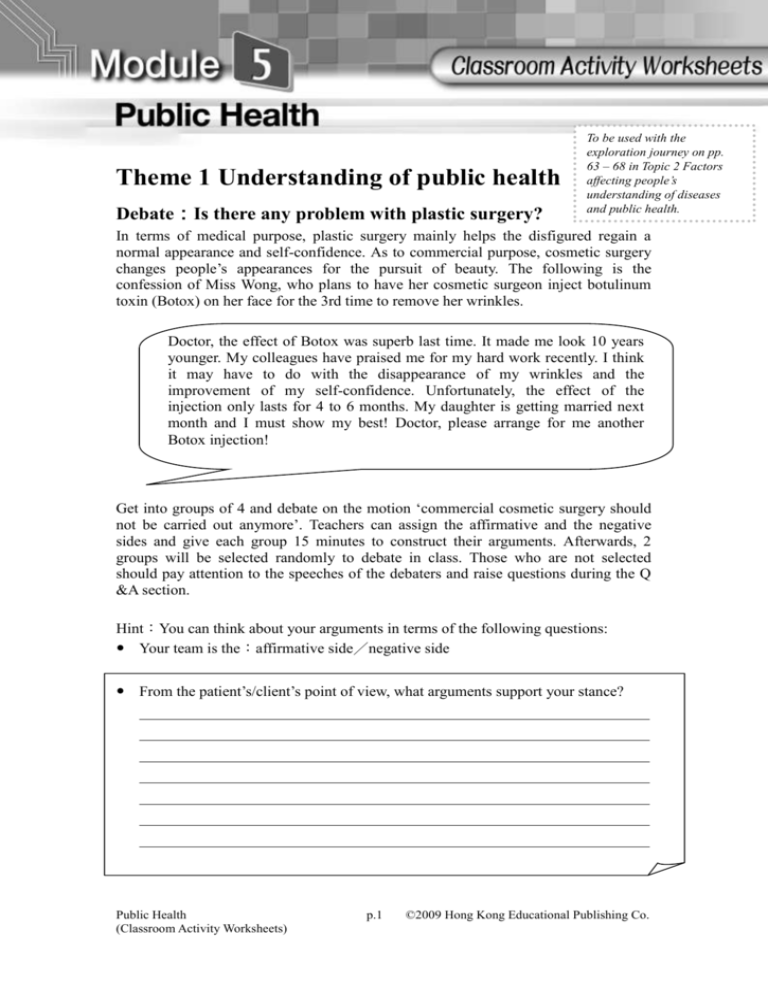
Theme 1 Understanding of public health Debate:Is there any problem with plastic surgery? To be used with the exploration journey on pp. 63 – 68 in Topic 2 Factors affecting people’s understanding of diseases and public health. In terms of medical purpose, plastic surgery mainly helps the disfigured regain a normal appearance and self-confidence. As to commercial purpose, cosmetic surgery changes people’s appearances for the pursuit of beauty. The following is the confession of Miss Wong, who plans to have her cosmetic surgeon inject botulinum toxin (Botox) on her face for the 3rd time to remove her wrinkles. Doctor, the effect of Botox was superb last time. It made me look 10 years younger. My colleagues have praised me for my hard work recently. I think it may have to do with the disappearance of my wrinkles and the improvement of my self-confidence. Unfortunately, the effect of the injection only lasts for 4 to 6 months. My daughter is getting married next month and I must show my best! Doctor, please arrange for me another Botox injection! Get into groups of 4 and debate on the motion ‘commercial cosmetic surgery should not be carried out anymore’. Teachers can assign the affirmative and the negative sides and give each group 15 minutes to construct their arguments. Afterwards, 2 groups will be selected randomly to debate in class. Those who are not selected should pay attention to the speeches of the debaters and raise questions during the Q &A section. Hint:You can think about your arguments in terms of the following questions: Your team is the:affirmative side/negative side From the patient’s/client’s point of view, what arguments support your stance? Public Health (Classroom Activity Worksheets) p.1 ©2009 Hong Kong Educational Publishing Co. From the considerations of scientific development, what arguments support your stance? From the perspective of safety, what arguments support your stance? Others: Public Health (Classroom Activity Worksheets) p.2 ©2009 Hong Kong Educational Publishing Co.


